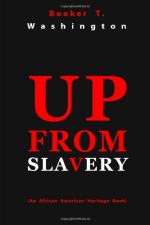From Holland we went to Belgium, and made a hasty trip through that country, stopping at Brussels, where we visited the battlefield of Waterloo. From Belgium we went direct to Paris, where we found that Mr. Theodore Stanton, the son of Mrs. Elizabeth Cady Stanton, had kindly provided accommodations for us. We had barely got settled in Paris before an invitation came to me from the University Club of Paris to be its guest at a banquet which was soon to be given. The other guests were ex-President Benjamin Harrison and Archbishop Ireland, who were in Paris at the time. The American Ambassador, General Horace Porter, presided at the banquet. My address on this occasion seemed to give satisfaction to those who heard it. General Harrison kindly devoted a large portion of his remarks at dinner to myself and to the influence of the work at Tuskegee on the American race question. After my address at this banquet other invitations came to me, but I declined the most of them, knowing that if I accepted them all, the object of my visit would be defeated. I did, however, consent to deliver an address in the American chapel the following Sunday morning, and at this meeting General Harrison, General Porter, and other distinguished Americans were present.
Later we received a formal call from the American Ambassador, and were invited to attend a reception at his residence. At this reception we met many Americans, among them Justices Fuller and Harlan, of the United States Supreme Court. During our entire stay of a month in Paris, both the American Ambassador and his wife, as well as several other Americans, were very kind to us.
While in Paris we saw a good deal of the now famous American Negro painter, Mr. Henry O. Tanner, whom we had formerly known in America. It was very satisfactory to find how well known Mr. Tanner was in the field of art, and to note the high standing which all classes accorded to him. When we told some Americans that we were going to the Luxembourg Palace to see a painting by an American Negro, it was hard to convince them that a Negro had been thus honoured. I do not believe that they were really convinced of the fact until they saw the picture for themselves. My acquaintance with Mr. Tanner reenforced in my mind the truth which I am constantly trying to impress upon our students at Tuskegee—and on our people throughout the country, as far as I can reach them with my voice—that any man, regardless of colour, will be recognized and rewarded just in proportion as he learns to do something well—learns to do it better than some one else—however humble the thing may be. As I have said, I believe that my race will succeed in proportion as it learns to do a common thing in an uncommon manner; learns to do a thing so thoroughly that no one can improve upon what it has done; learns to make its services of indispensable value. This was the spirit that inspired me in my first effort at Hampton, when I was




